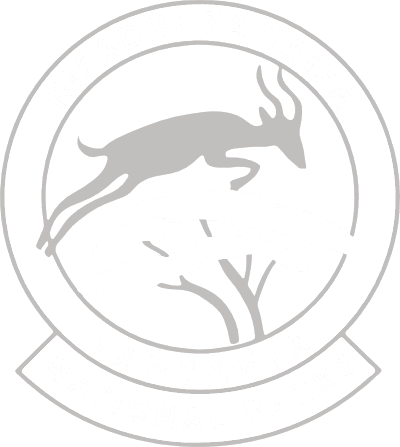- info@mirablesafaris.com
- GUIDE
- TANZANIA SAFARI
- All you need to know about the Great Wil....
All you need to know about the Great Wildlife Migration
The Great Wildlife Migration is an enormous and continuous roughly circular migration across the plains and woodlands of Tanzania and Kenya by two million wildebeests, zebras and antelopes. Learn all about this fascinating and truly spectacular phenomenon!

Mirable Safaris
May 12, 2025 | 11 min read
What is the Great Wildlife Migration?
The Great Wildlife Migration – also simply called the Great Migration – is the largest overland migration on Earth. Around two million hoofed animals move together in a roughly circular path across a vast expanse of East Africa. An annual phenomenon, it’s also a migration with a ‘tail’: predators like lions stalk the travelling herds for prey. It’s a wildlife extravaganza that draws visitors from the around the world who are eager to go on safari and see this unique spectacle for themselves.
The Great Wildlife Migration is a spectacular annual movement of over two million wildebeest, zebras, and gazelles across Tanzania and Kenya, driven by rainfall patterns in search of fresh grazing and water, creating a dramatic natural spectacle.

Where can I see the Great Migration?
The Great Wildlife Migration takes place in northern Tanzania and southwestern Kenya. It’s a cross-border ecosystem that the two countries collaborate in protecting. We love a good wildlife collaboration!
Path and map of the Great Migration
There is no fixed Great Migration path. Rather, each year a unique path develops based on the availability of food and water. Each cycle can end up being anywhere between 800 and 1,600 km in length.
That said, there’s a general pattern to the path followed by the Great Migration animals. The animals of the migration move in a clockwise direction through the length of the Serengeti National Park and up then up into the Maasai Mara National Reserve in Kenya. The route repeats each year and covers roughly a thousand miles.
Knowing the general route of the Great Wildlife Migration can help you to judge roughly when and where some of the herds will pass through. This is obviously useful when planning your African safari.
Map of the Great Migration
The map below gives an idea of the sort of path taken annually by the Great Migration animals.

As you may have noticed in the map above, the animals of the Great wildlife Migration often head further south than the Serengeti National Park. This is because they usually also migrate through the Ngorongoro Conservation Area, another superb protected area in northern Tanzania.
So while most of us think of the Great Migration as occurring in Serengeti National Park and Maasai Mara, it actually takes place in the following five protected areas:
- Serengeti National Park (Tanzania)
- Ngorongoro Conservation Area (Tanzania)
- Loliondo Game Controlled Area (Tanzania)
- Grumeti Reserve (Tanzania)
- Maasai Mara National reserve (Kenya)
Now you know. 😉

What animals take part in the migration?
The Great Migration is a spectacle unlike any other on earth. Around two million animals move en masse across the landscape of the Serengeti and Maasai Mara. The bulk of the migrating mammals are wildebeests. But there are also incredible numbers of zebras and different antelopes taking part too. Here’s a quick look at each animal you can look forward to seeing in the Great Migration …
1. Wildebeests
At the heart of the Great Wildlife Migration is the wildebeest, or the blue wildebeest to be more precise. This is so much the case that sometimes the migration is referred to as the Great Wildebeest Migration. Around 1.5 million wildebeests take part in the migration. What a number! The pageant they put on when moving en masse is unique and mesmerising.
Migratory herds
The 1.5 million blue wildebeests of the Great Migration don’t all move in one astronomically large herd. There are various herds that separate, converge and morph as the migration moves forward. That said – and as the image below attempts to show – the herds are still massive, and are utterly uncountable to the dumbstruck spectator!

Given the endless migratory habits of the wildebeests, it may not surprise you to learn that calves can stand within seven minutes of being born, and can keep up with the herd after just a coupe of days! These are animals born to get a move on!
Each year between January and March, around half a million wildebeest calves are born in the Serengeti during the calving season. This incredible event marks the beginning of the Great Migration and attracts numerous predators, offering a dramatic and vital chapter in the region’s natural life cycle.
2. Zebras
Around 200,000 zebras travel alongside the wildebeests as part of the Great Migration. These zebras are a subspecies of the plains zebra known as Grant’s zebra. They’re the smallest of the plains zebra, and very beautiful. The stripes on their body are vertical, while those on their legs are horizontal.
Migrating alongside wildebeests
Zebras are highly social animals, and live in herds. Fascinatingly, the reason that zebras can move in harmony with wildebeests in the Great Migration is that the two creatures eat different parts of the same type of grass. This is why (as shown in one of the photos below) you often see zebra and wildebeest herds mixing along the Great Migration route.
Did you know that female zebras have a gestation period of over a year? They can only carry one calf at a time, and, once the calf is born, they nurse it for up to a year.

Zebras and wildebeests are perfect travel companions during the migration. Zebras graze on the tougher, upper grass, while wildebeests feed on the softer, shorter parts. This complementary feeding habit allows them to coexist peacefully and efficiently share grazing areas.

3. Antelopes
Various types of antelopes also make up part of the Great Wildlife Migration. Most notably, you have the following four antelopes making up the ranks of the migration:
- Thomson’s gazelle (Eudorcas thomsonii) – sometimes referred to as a “tommie”. Around 500,000 take part in the Great Wildlife Migration! They’re easy to identify by the black stripes that run down the sides of their bodies. They’re fantastic runners, and can exceed 65 km per hour.
- Grant’s gazelle (Nanger granti) – it’s similar to a Thomson’s gazelle, but is much larger. It also lacks the black side stripes of the Thomson’s gazelle, making the two easy to distinguish even in isolation. These guys can run as fast as 80 km per hour! An important skill when you have predators chasing you down your entire life.
- Impala (Aepyceros melampus) – this slender antelope is a favourite with many for its beautiful appearance and graceful leaping. And boy can they run! Impalas can actually reach a run-in speed of 90 km per hour.
- Common eland (Taurotragus oryx) – it can grow to be 1.6 m at shoulder height. Around 18,000 elands take part in the Great Wildlife Migration. Elands are the slowest antelope, running at only about 40 km per hour. They can, however, jump three metres into the air!
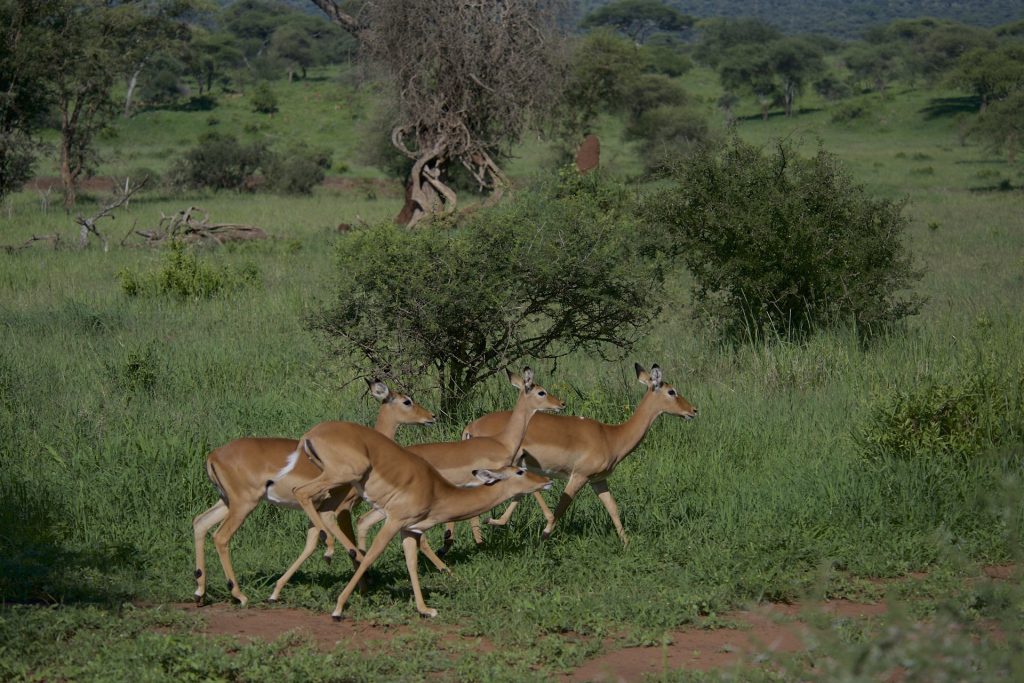
Around half a million Thomson's gazelles join the Great Migration each year, moving alongside wildebeests and zebras. Their speed and agility help them evade predators as they journey across the Serengeti and Masai Mara in search of fresh grazing lands.
Animals that prey on the migration herds
Various animals prey on the herds of the Great Wildlife Migration. Think leopards, cheetahs and African wild dogs, for instance. But front and centre is the lion, the mighty King of the Jungle. Lions actually stalk the herds, moving across the landscape in pursuit of them. Another notable Great Migration predator is the hyena, which also tracks the herds, looking for chances to strike. Some predators don’t stalk the migration, but take their opportunities when they come. Of significance here are the massive crocodiles of the Serengeti’s rivers.
Here’s a little more on each of these three fearsome predators …
1. Lions
Around 3,000 African lions stalk the herds of the Great Migration. It’s interesting to note that male lions generally hunt alone, while female lions (lionesses) hunt in a cooperative group.
Also interesting is the fact that wildebeests and lions both have the same maximum running speed: around 80 km per hour. Wildebeests can, however, sustain their running for longer. This is one of the reasons why cooperative hunting is useful to lions.
An adult lion’s roar is incredibly powerful and can be heard from up to 8 kilometers away. This mighty sound is used to communicate with pride members, mark territory, and ward off intruders in the vast African savannah.
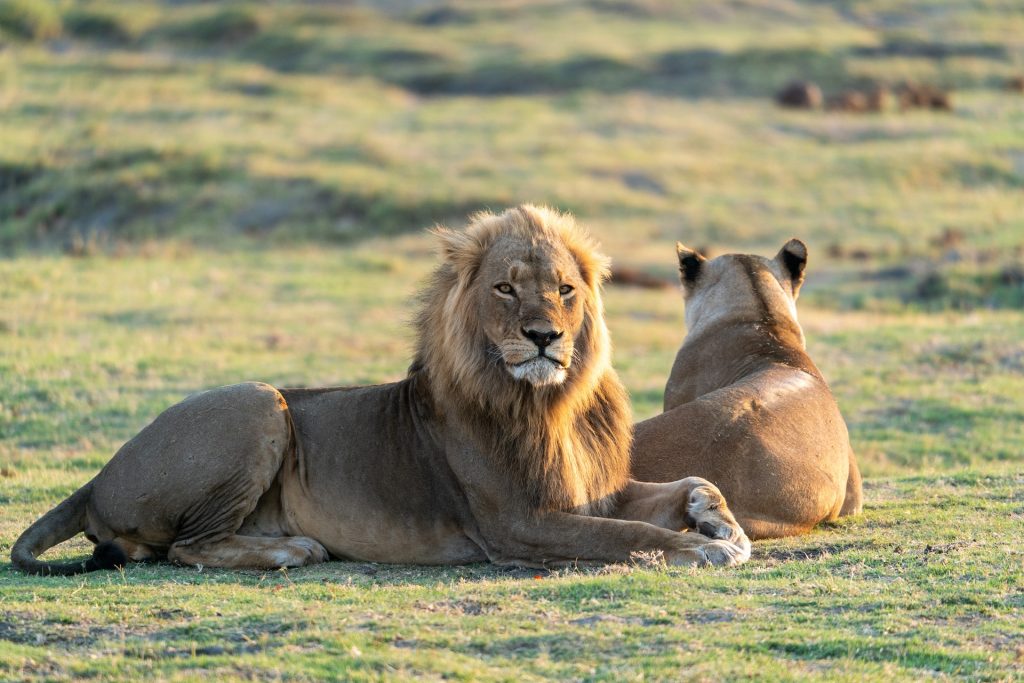
Various animals prey on the herds of the Great Wildlife Migration. Think leopards, cheetahs and African wild dogs, for instance. But front and centre is the lion, the mighty King of the Jungle. Lions actually stalk the herds, moving across the landscape in pursuit of them. Another notable Great Migration predator is the hyena, which also tracks the herds, looking for chances to strike. Some predators don’t stalk the migration, but take their opportunities when they come. Of significance here are the massive crocodiles of the Serengeti’s rivers.
Here’s a little more on each of these three fearsome predators …
1. Lions
Around 3,000 African lions stalk the herds of the Great Migration. It’s interesting to note that male lions generally hunt alone, while female lions (lionesses) hunt in a cooperative group.
Also interesting is the fact that wildebeests and lions both have the same maximum running speed: around 80 km per hour. Wildebeests can, however, sustain their running for longer. This is one of the reasons why cooperative hunting is useful to lions.
- Other Blog Relates
- What is the best route to hike up mount kilimanjaro
- What is the best route to hike up mount kilimanjaro
- What is the best route to hike up mount kilimanjaro
- What is the best route to hike up mount kilimanjaro
- What is the best route to hike up mount kilimanjaro
- What is the best route to hike up mount kilimanjaro
Ready For an Adventures
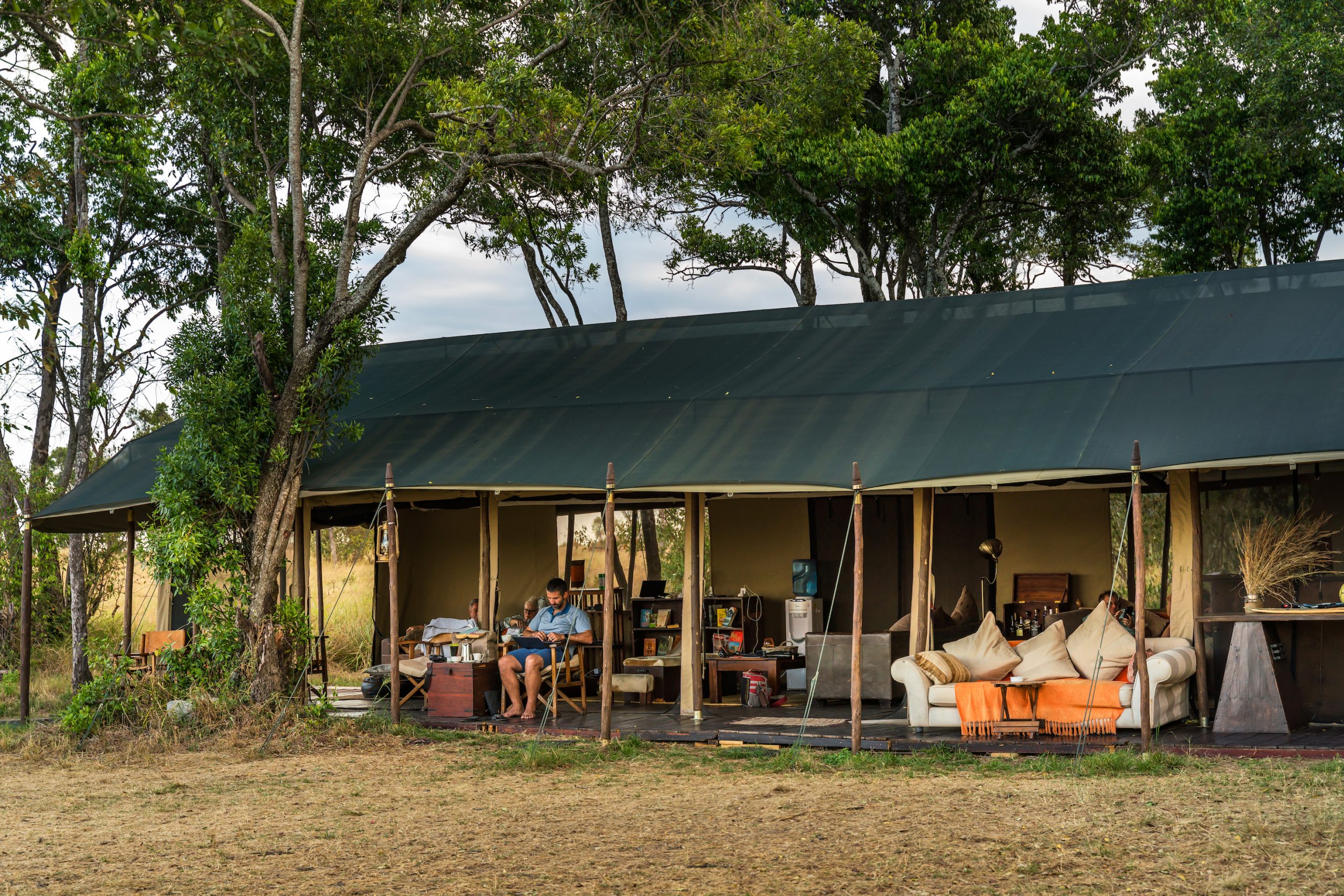
- 7 DAYS
Tanzania Camping Tour
Each day, as we set out on our safari in Tanzania, we experience an adventure filled with…
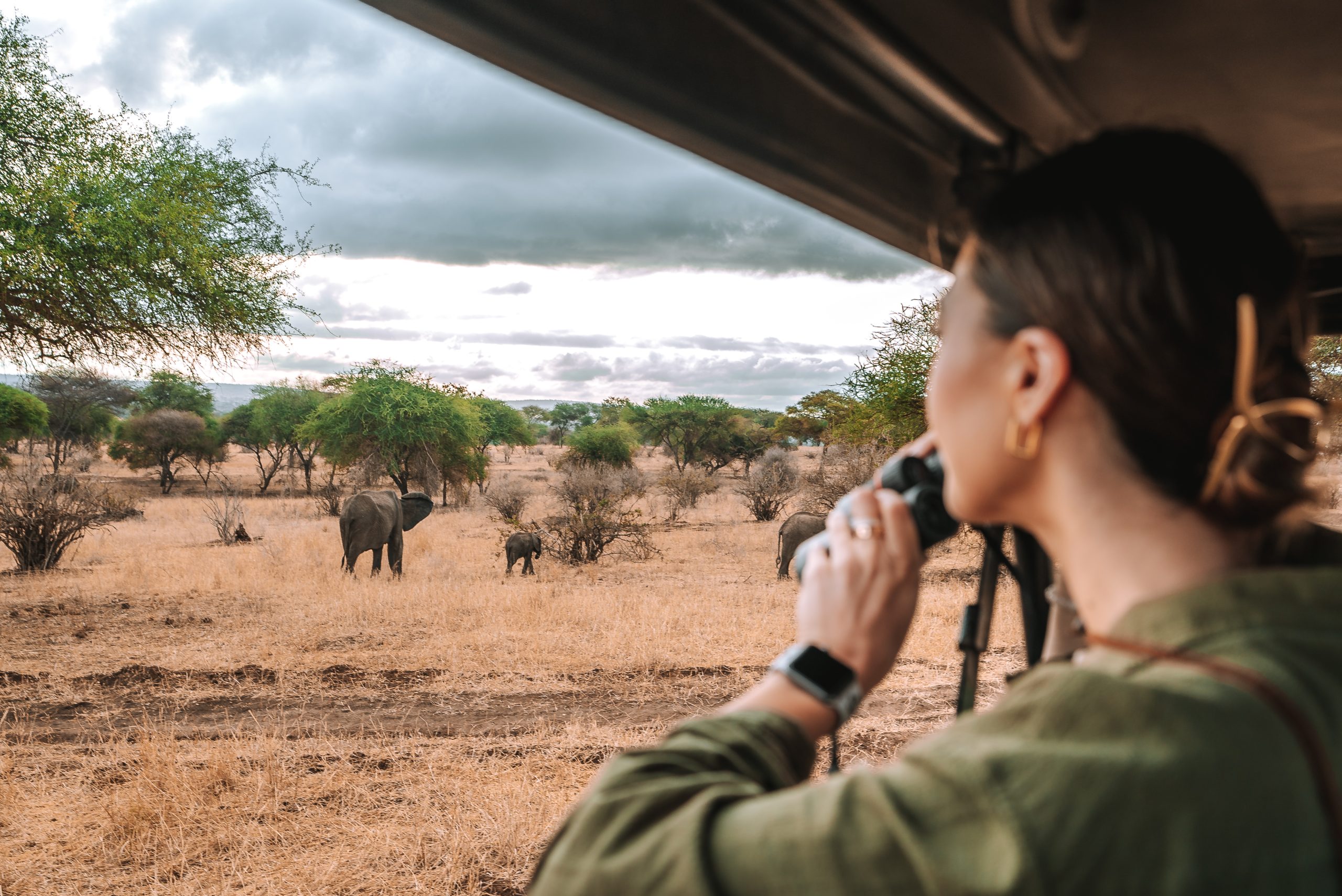
- 6 DAYS
Private safari in tanzania
The perfect time to reflect on some of what will be sure to be your greatest memories in lif..

- 5 DAYS
Thrilling Serengeti and Ngorongoro Crater
Experience on an exhilarating safari in Tanzania, tailor-made for nature enthusiasts like you!


